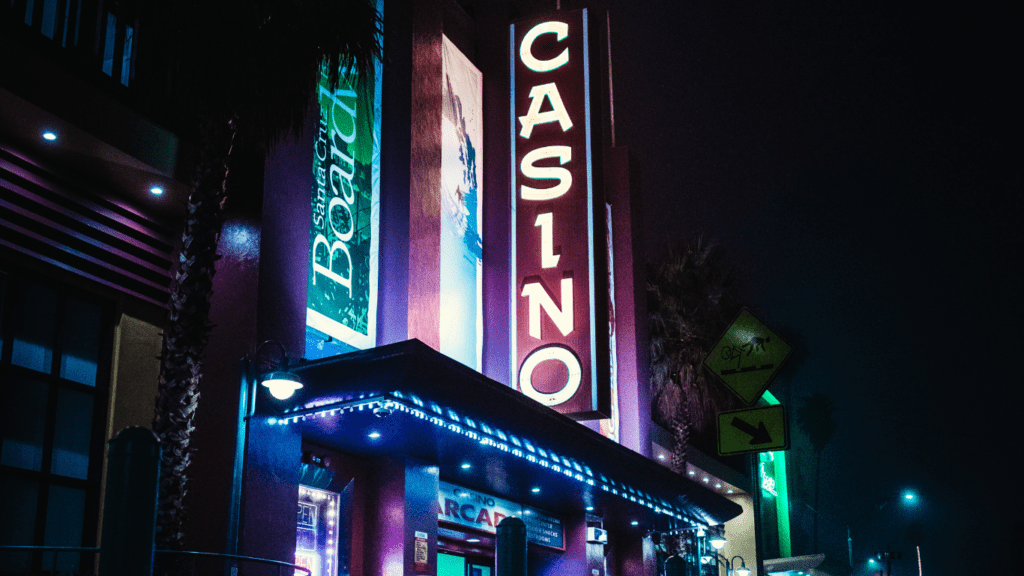The Pandemic’s Initial Impact on Casino Revenues
The pandemic hit the casino industry hard due to unprecedented restrictions. A combination of factors led to immediate financial challenges.
Lockdown Measures and Immediate Closures
Governments enforced strict lockdowns, leading to the closure of casinos worldwide. Many casinos halted operations entirely, causing revenue to drop drastically.
For example, in the US, casinos lost close to 80% of expected revenue during initial lockdowns. This cessation forced casino operators to grapple with substantial financial losses and consider workforce reductions.
Temporary Shifts to Online Gambling
Operators quickly adapted to digital platforms during physical closures. Online gambling saw a surge as traditional gamblers moved to digital alternatives.
In 2020, online gambling revenues increased by 30% globally, showcasing a significant shift in consumer behavior. This pivot provided a temporary lifeline but didn’t fully offset losses from brick-and-mortar operations.
Economic Challenges Faced by the Casino Industry
Casino operators have endured significant economic challenges due to the pandemic, deeply impacting their revenue streams and operations. These hurdles primarily stem from a drastic reduction in tourist traffic and an escalation in employment and operational costs.
Loss of Tourist Revenue
The reduction in international and domestic travel hit casinos hard, as they typically rely on a steady influx of tourists. According to the World Travel & Tourism Council, global tourist numbers dropped by 74% in 2020.
Casinos in popular tourist destinations, such as Las Vegas and Macau, experienced a substantial decrease in foot traffic, severely impacting revenue collections. As a result, without tourists fueling their customer base, casinos struggled to maintain profitability.
Employment and Operational Cost Struggles
During the pandemic, casinos faced rising operational costs alongside reduced income. Maintaining sanitation standards and adapting facilities for social distancing led to increased spending.
At the same time, employment challenges emerged, with operators having to cut jobs or furlough workers to manage financial constraints. Data from the American Gaming Association indicated that during the height of COVID-19, the casino workforce shrank by approximately 25%, affecting both employees and operations negatively. Staffing shortages and economic pressures continue to pose ongoing challenges for recovery efforts.
Adaptation and Response Strategies
Casinos have faced enormous pressure to adapt and innovate due to the pandemic’s impacts. Implementing effective strategies for recovery is essential to securing their future in this evolving landscape.
Health and Safety Protocols
Establishing robust health and safety protocols has been critical for casinos in building customer confidence. Many casinos introduced measures like:
- mandatory mask-wearing
- temperature checks
- enhanced cleaning routines
In particular, some adopted contactless check-ins and introduced Plexiglass barriers at gaming tables to facilitate social distancing. According to the American Gaming Association, these changes were essential in allowing casinos to reopen safely. While costly, these safety measures have been vital in mitigating health risks and ensuring continuity of operations.
Digital Transformation and Innovation

- Embracing digital transformation has emerged as a key survival strategy for casinos.
- With shifts in consumer behavior, many operators leveraged technology to enhance customer experience.
- Online gaming platforms expanded rapidly, providing virtual options for traditional games.
- Reports indicate an increase of over 30% in online gambling revenue, demonstrating a significant consumer shift.
- Casinos also employed data analytics to personalize marketing and improve customer engagement, capitalizing on mobile apps and virtual reality to attract tech-savvy audiences.
- This digital pivot not only helped bridge the gap left by reduced physical foot traffic but also created a new revenue stream for future growth.
Analysis of Recovery Trends
Casino operations are gradually stabilizing, with recovery trends showing differentiation by region. Analyzing these trends involves understanding reopening phases and government interventions that have influenced revenue trajectories.
Reopening Phases and Revenue Recovery
Reopening phases played a pivotal role in casinos’ revenue recovery. Initially, reopening occurred in phases, following local guidelines. Areas with rapid vaccination progress and easing restrictions saw quicker rebounds.
For example, Las Vegas reported a significant uptick in visitation and revenue as casinos resumed operations, reaching nearly 70% of pre-pandemic levels by the end of 2021.
In contrast, other regions faced prolonged restrictions, delaying their recovery. Regional differences underscored the importance of adapting strategies to local conditions to optimize financial performance.
Role of Government Support and Regulations
Government support and regulations provided critical lifelines for many casinos. The introduction of financial aid packages and tax reliefs helped offset some operational costs.
In the US, the Paycheck Protection Program (PPP) assisted smaller gaming establishments in retaining employees, while some states offered tax deferrals or exemptions.
Regulatory adjustments also enabled flexibility in business operations, like permitting outdoor gaming or extending online gambling approvals. These measures buffered casinos against severe financial distress, promoting a recovery that, although uneven, was significantly aided by governmental intervention.
Future Forecasts for the Casino Industry
The casino industry is poised for a transformation as it navigates post-pandemic challenges. Key forecasts indicate a gradual recovery driven by economic factors and evolving consumer preferences.
Predicted Economic Recovery Timeline
Analysts expect a steady recovery in the casino industry, with projections suggesting a return to pre-pandemic revenues by 2024. The pace of recovery varies by region, with areas like North America rebounding faster due to successful vaccination campaigns and eased restrictions.
The American Gaming Association reports that in Q2 2023, US casinos experienced a 9% year-on-year revenue increase, signaling consistent growth. Global demand for travel and leisure activities is predicted to support this upward trajectory, notably benefiting destination casinos.
Trends in Online and In-Person Gambling
The pandemic accelerated a pivotal shift toward online gambling, a trend likely to continue shaping the industry’s future. Experts anticipate that by 2025, online platforms could account for over 20% of total casino revenues worldwide.
This growth stems from increasing consumer demand for digital experiences and regulatory changes enabling broader market participation.
Meanwhile, in-person gambling is set to evolve, with innovations such as cashless systems and integrated safety protocols becoming standard. The blending of digital and physical offerings will redefine customer engagement, providing seamless experiences across both domains.



 Mitchellin Campersonics
Crypto Jackpot Analyst
Mitchellin Campersonics serves as the Crypto Jackpot Analyst at Jackpot Lucky Deal, specializing in the intersection of cryptocurrency and online jackpots. With a background in digital currencies and extensive experience analyzing the crypto market, Mitchellin provides unique insights into the emerging world of crypto-based jackpots. Her role involves exploring innovative betting strategies, evaluating crypto jackpot trends, and helping players understand the benefits and risks of this cutting-edge betting space. Known for her analytical mind and clear communication, Mitchellin’s articles and reports give Jackpot Lucky Deal readers a competitive edge in the world of crypto jackpots, arming them with knowledge to make informed decisions in a rapidly evolving market. Mitchellin is passionate about helping players navigate this new territory, ensuring they have access to both practical advice and up-to-date information.
Mitchellin Campersonics
Crypto Jackpot Analyst
Mitchellin Campersonics serves as the Crypto Jackpot Analyst at Jackpot Lucky Deal, specializing in the intersection of cryptocurrency and online jackpots. With a background in digital currencies and extensive experience analyzing the crypto market, Mitchellin provides unique insights into the emerging world of crypto-based jackpots. Her role involves exploring innovative betting strategies, evaluating crypto jackpot trends, and helping players understand the benefits and risks of this cutting-edge betting space. Known for her analytical mind and clear communication, Mitchellin’s articles and reports give Jackpot Lucky Deal readers a competitive edge in the world of crypto jackpots, arming them with knowledge to make informed decisions in a rapidly evolving market. Mitchellin is passionate about helping players navigate this new territory, ensuring they have access to both practical advice and up-to-date information.

